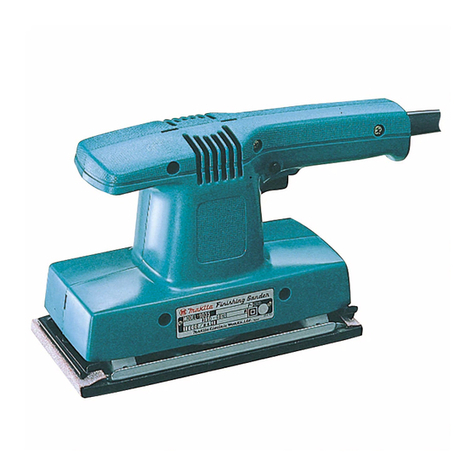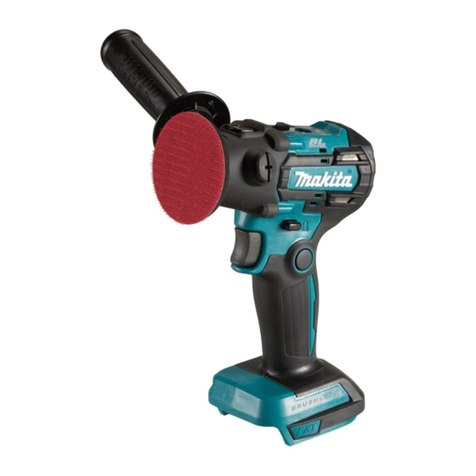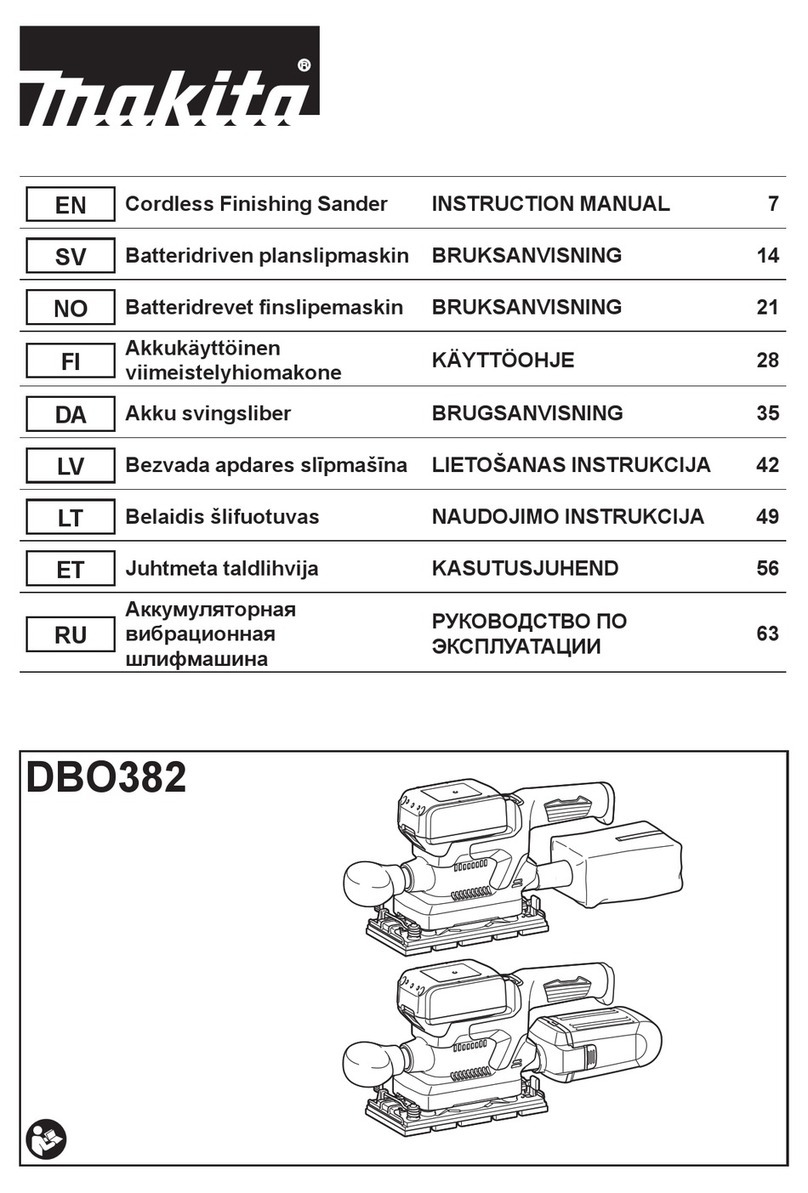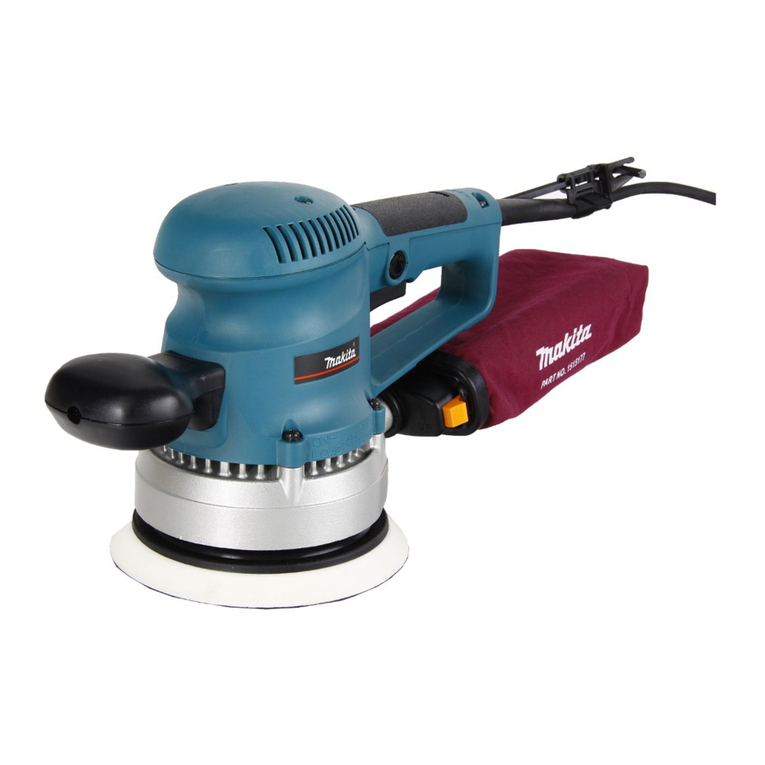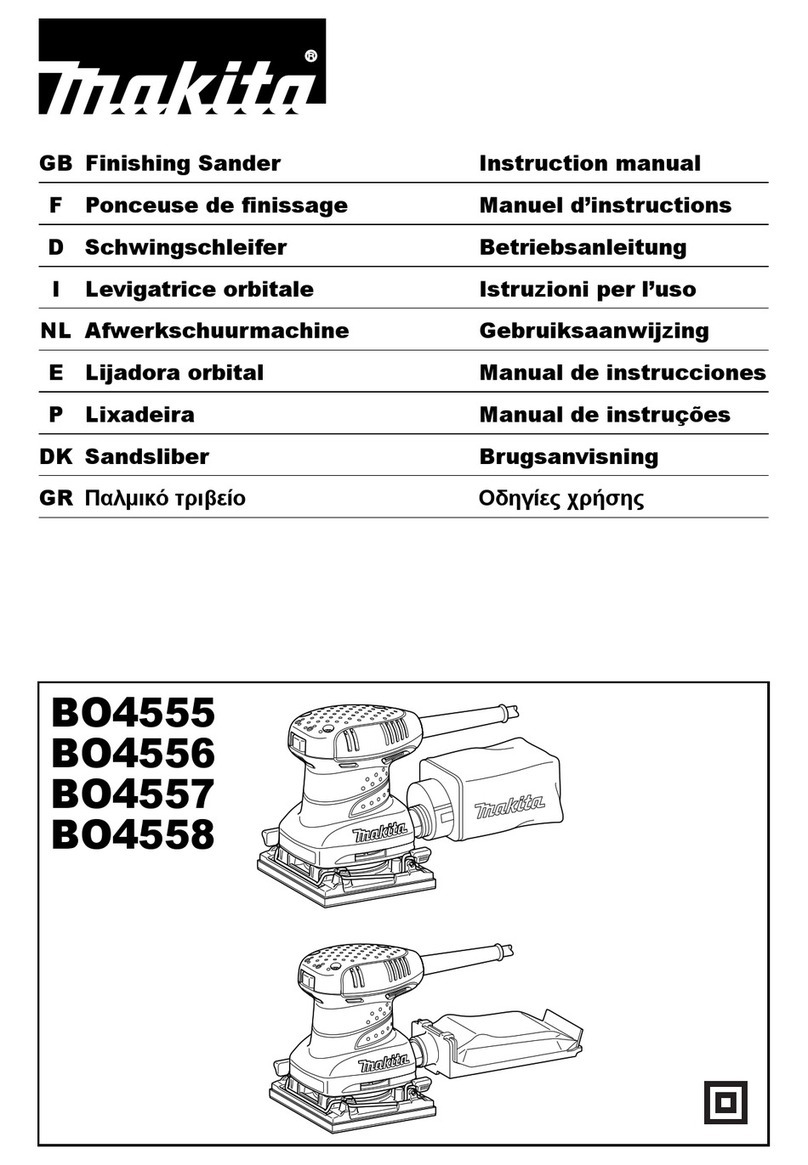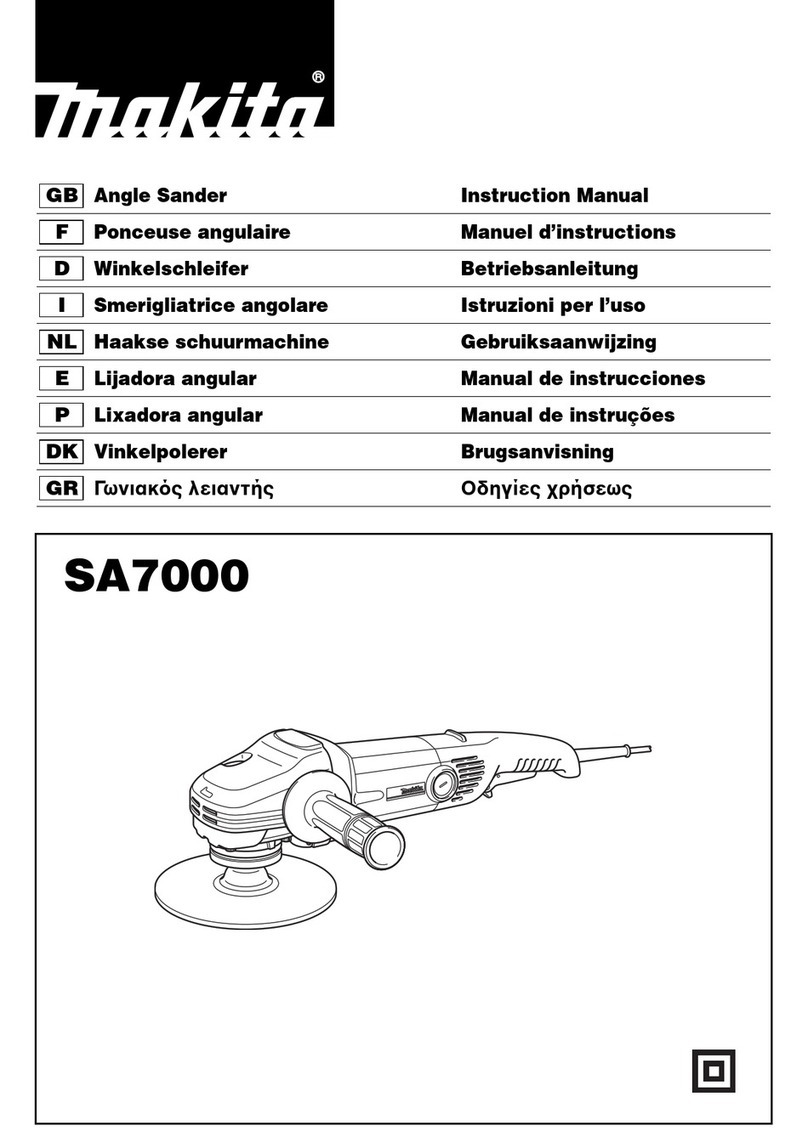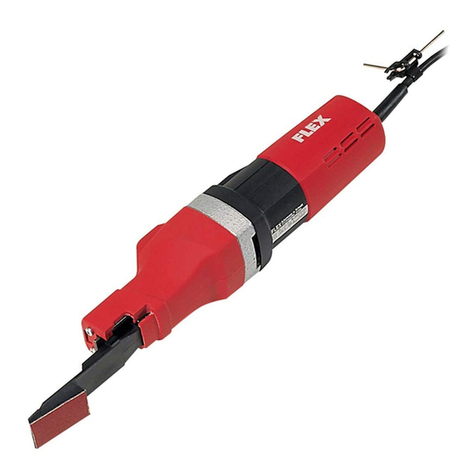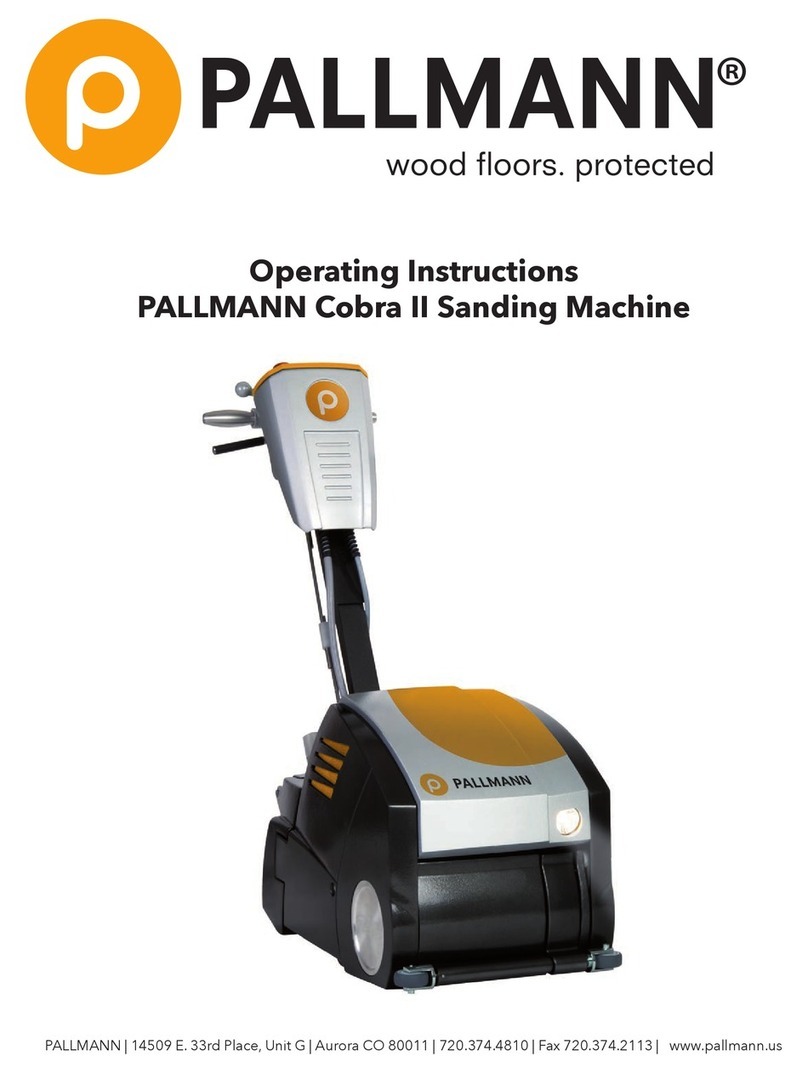6. Do not expose power tools to rain or wet
conditions. Water entering a power tool will
increasethe risk of electric shock.
7.
Donotabusethe cord. Neveruse the cord
to carry the tools or pullthe plug from an
outlet. Keep cord away from heat, oil,
sharp edges or moving parts. Replace
damaged cords immediately. Damaged
cords increasethe risk of electric shock.
8.
When operating a power tool outside, use
an outdoor extension cord marked "W-A"
or
"W". These cords are rated for outdoor
use andreducethe riskof electricshock.
PersonalSafety
9.
Stay alert, watch what you are doing and
use common sense when operating a
power tool. Do not use tool while tired or
under the influence of drugs, alcohol, or
medication. A moment of inattention while
operating power tools may result in serious
personalinjury.
10.
Dress properly. Do not wear loose cloth-
ing or jewelry. Contain long hair. Keep
your hair, clothing, and gloves away from
movingparts. Looseclothes,jewelry,or long
haircanbecaught inmovingparts.
11. Avoid accidental starting. Be sure switch
is
off
before pluggingin. Carrying
tools
with
your finger on the switch or pluggingin
tools
that havethe switch on invitesaccidents.
12. Remove adjusting keys or wrenches
before turning the tool on.
A
wrench or a
key that is left attached
to
a rotating part of
thetool may result in personalinjury.
13.
Do not overreach. Keep proper footing
andbalanceat alltimes. Proper footingand
balance enables better control of the
tool
in
unexpectedsituations.
14.
Use safety equipment. Always wear eye
protection. Dust mask, non-skid safety
shoes, hard hat, or hearing protection must
be used for appropriate conditions. Ordinary
eye or sun glassesare NOT eye protection.
Tool
UseandCare
15. Use clamps or other practical way to
secure and support the workpiece to a
stable platform. Holdingthework by handor
against your body is unstable and may lead
to
loss
of control.
16. Do not force tool. Use the correct tool for
your application. The correct
tool
will do the
job better and safer at the rate for which it is
designed.
17. Do not use tool if switch does not turn it
on or
off.
Any
tool
that cannot be controlled
with the switch is dangerous and must be
repaired.
18.
Disconnect the plug from the power
source before making any adjustments,
changing accessories, or storing the tool.
Such preventive safety measures reducethe
riskof starting the tool accidentally.
19. Store idle tools out of reach of children
and other untrained persons.
Tools
are
dangerousinthe hands
of
untrainedusers.
20. Maintain tools with care. Keep cutting
tools sharp and clean. Properlymaintained
tools with sharp cutting edges are less likely
to bindand are easier
to
control.
21. Check for misalignment or binding of
moving parts, breakage of parts, and any
other condition that may affect the tools
operation. If damaged, have the tool ser-
viced before using. Many accidents are
causedby poorlymaintainedtools.
22. Use only accessories that are recom-
mended by the manufacturer for your
model. Accessories that may be suitablefor
one tool, may become hazardouswhen used
on another
tool.
SERVICE
23.
Tool
service must be performed only by
qualified repair personnel. Serviceor main-
tenance performed by unqualified personnel
could result ina risk of injury.
3

